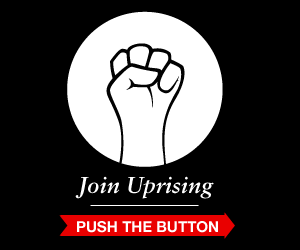On cue, Chrysler turns a great ad campaign into a movement
Posted on 9th Feb 2012 by Brian Sheehan in BlogIn the waning days of January 2012, Saatchi CEO Kevin Roberts addressed the attendees of the MIDEM music fest at Cannes. His message: “Marketing is dead. We have got a much higher calling now. Your role is not to market stuff at people, but to create a movement, whether that is an artist or a venue…”
Movements are about emotional engagement for peddling music, products, politicians, and anyone who wants to be successful in a connected social world.
As if on cue, just days later, Chrysler ran an ad during halftime of the Super Bowl that had all the earmarks of a movement in motion. Actually, the advent of the movement was a year ago, when Chrysler had the audacity to launch their Chrysler 200 as luxury car from down, but decidedly not out, Detroit. The ad was replete with the city’s iconic native son Eminem, gritty street scenes, and inspirational “we’ll be back” copy, such as “It’s the hottest fires that make the hardest steel,” and “This is the motor city, and this is what we do.”
It made a minor sensation in last year’s super bowl, in large part due to its counter-intuitive prideful underdog approach. A funny thing happened though. The tonality of the ad touched a cord with America. It was as if Chrysler was talking for not only itself, and the city of Detroit, but for the entire US auto industry.
Throughout 2011, Chrysler has continued ads in this vein. Behind renewed good feelings around the brand and some key new products in all of its divisions, Chrysler posted its first yearly profit in almost 15 years.
But then on last Sunday night Chrysler upped the ante in a big way. Everything about the ad was perfect. It’s tone and message went right of the heart of Middle America. Its theme “Halftime in America” was very clever—coming at halftime when teams reassess their strategies. By including the a new iconic figure, and in this election season, the almost presidential figure of Clint Eastwood, the whole message was elevated, giving it the feeling of the 21st century’s answer to Reagan’s “Morning in America.” It felt like Chrysler had gone from speaking for the auto industry to speaking for America to Americans. And that’s a pretty neat trick especially for a company that is now controlled by an Italian company.
So it was a great ad, but where does the “movement” come in?
By tapping into an idea bigger than the brand itself, in this case as big as America’s coming rebound, Chrysler has aligned itself with an idea on the rise. This is a strategy that movements use to connect their idea/brand/purpose to a wider audience at the top of the funnel.
I teach college students. What has amazed me about this ad and this whole campaign is how it seems to speak to all Americans of all ages. They tell me it makes them proud to think of America that way, and that they are rooting for Chrysler in a way they are not really rooting for GM or Ford. They say it aloud in class. When I look around to see if it passes the BS meter, I see a room full of nodding heads. I see a generation whose defining childhood moment was 911 eager to be part of a proud and successful America.
On another level, political pundits have been questioning whether this commercial is a thinly veiled Re-elect Obama message. Think of it as the Super Bowl Super PAC. Any ad or campaign that can be used to ignite the spirit of Americans and even effect the course and discourse of an election is more than just great advertising, it is the definition of the kind of movement Kevin Roberts was talking about.
blog comments powered by Disqus




